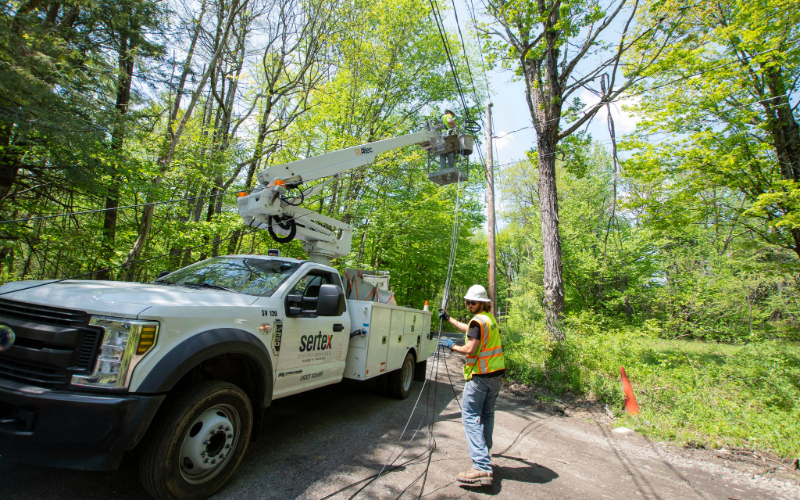
Broadband Deployment Best Practices
Spurred by federal funding, fiber networks are increasingly deployed in rural and remote locations where infrastructure buildout is arduous. Years of working on deployments with varying geographic issues and operational challenges have imparted valuable lessons about timely project execution despite uncontrollable variables. From the mountains to the coast, here are seven best practices and the stories behind them.
7 Essential Lessons for Broadband Development Best Practices
#1: Careful Planning and Network Design Flexibility
While planning and design are critical, often unanticipated factors come into play. Understanding a community’s geography, influencers, and eccentricities can facilitate smooth network deployment.
- Securing needed materials can be a considerable challenge, and placing orders well in advance helps ensure sufficient supplies for project deadlines. Specifying fewer materials can minimize inventory and supply chain issues, control costs, and reduce errors. Leftover standardized materials can be easily redirected to new jobs.
- In the many months between network engineering and project completion, technology advances. Fiber experts should inform customer communities of cost-effective new technologies that can improve original designs. BroadbandBI administrators upgraded Block Island’s network to XGSPON technology, which became available during the buildout, expanding the originalGPON capacity.
- Design changes happen on the fly, especially when property access is problematic. Some 50% of all roadways on Block Island are privately owned, and every owner had to approve fiber drops for premises accessible through their parcels. Access issues were responsible for most of BroadbandBI’s record-breaking 69 design revisions. Extra materials were required for circuitous alternate paths to homes.
- Planning often won’t vet natural or historical landmarks and sometimes preservation authorities must grant permission for underground construction. On Block Island, planned infrastructure in three areas had to be redesigned around Native American burial grounds.
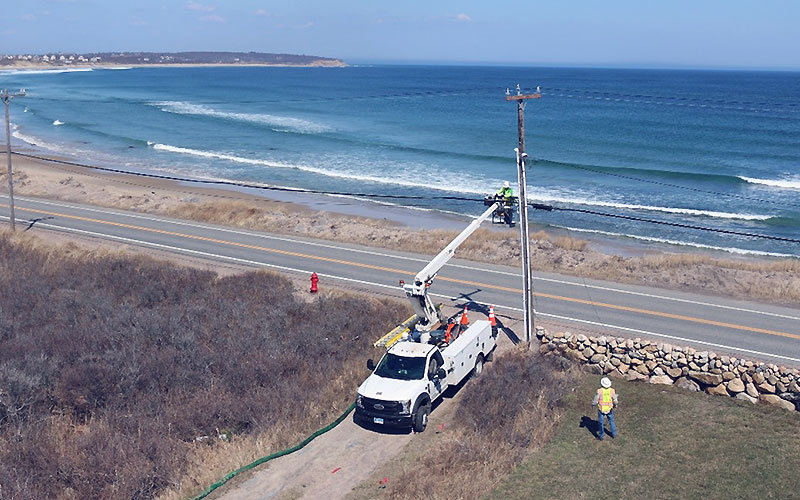
Winds were constantly monitored for safety in buckets extended 25 feet aloft. Block Island’s strongest winds blew during prime construction months.
#2: Overcoming Weather Challenges ~ Working With (and Around) Mother Nature
In the Northeast, challenging terrain and extreme weather conditions can mean complex installations.
- In high-elevation areas, the ground is frozen and snow-covered for up to six months, making areas impassable and construction impossible. When trenching is unachievable, crews can lay temporary ground cables, providing households access to broadband until permanent drops can be installed.
- Spring means mud season. Equipment gets stuck and plows move mud rather than snow. At times, conditions are so extreme that crews wade through mud to access homes. State and local authorities can help to remove runoff soil and lay foundational stone so construction can resume.
- Recent years have been extremely wet in the Northeast, with days of torrential rain. In mountainous areas, flooding and mudslides mean work stoppages. Clearer days allow crews to push the schedule and compensate for lost time.
- In offshore communities, weather challenges include rough seas, high winds, and seasonal storms. Block Island’s Blizzard of 2022 brought more than two feet of snow, stopping work for several days until the snow melted. During the two-year build, the island also experienced two hurricanes and hundreds of gale warnings.
- Winds must be constantly monitored for safety in buckets extended 25 feet aloft, and for securing equipment and supplies on the ground. Block Island’s average wind speed is 11 miles per hour and the strongest winds blow during prime construction months, so monitoring gusts required constant vigilance.

In high-elevation areas, the winter season lasts up to six months. Crews deployed fiber through challenging terrain and extreme weather conditions.
#3: Transporting Supplies and Equipment ~ Advance Logistics Eliminate Delays
While most construction projects take transportation for granted, sometimes getting there isn’t so easy.
- Working on an island accessible only by planes or ferries that run when nature permits requires intensive planning and advanced logistics. Ferry space is limited in every season. Sertex project management and ferry operators planned equipment and supply shipments months in advance, moving 90 miles of fiber optic cable in multiple 54-foot tractor trailer loads over a 12-month period.
- Logistics teams must be continuously alert for transportation delays, mechanical breakdowns, and weather issues. Throughout the winter of 2021, only a small ferry ran to Block Island, meaning every shipment had to be broken into multiple small trips.
- Sertex stored backup construction equipment on the island, as replacement equipment could take months to transport by ferry.
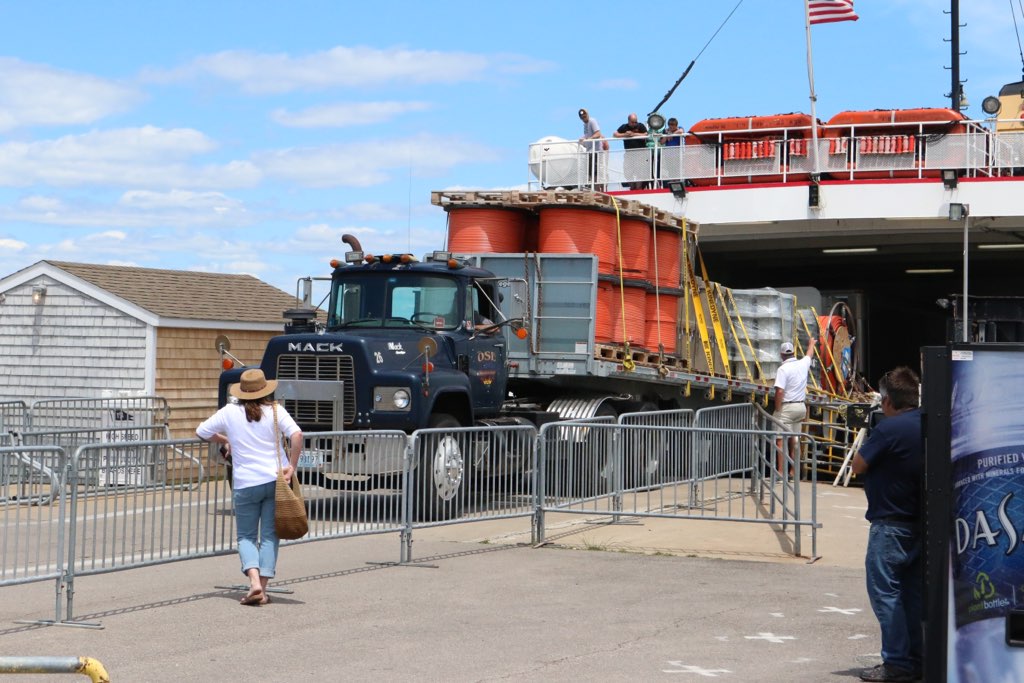
The BroadbandBI network required 90 miles of fiber optic cable to be transported by ferry in multiple 54-foot tractor trailer loads.
#4: Natural Barriers, Environmental Challenges, and Permitting
Building around natural barriers and complying with environmental regulations is always difficult. Sometimes rerouting is the answer. Other times, creative thinking solves problems and satisfies permitting authorities.
- Environmental preservation is critical in coastal and wetland areas. On Block Island, where 35% to 40% of construction involved wetlands, Sertex worked closely with environmental authorities to design the least disruptive routes and secure permitting. Miles of the most advanced erosion and sediment control materials were ordered, warehoused, and installed.
- Natural barriers like island brush, ponds, and wetlands must be painstakingly navigated. Innovative Sertex crews use drones to fly weighted line – tied on one end to the drone and on the other end to fiber cable – from one side of barrier areas to the other. The attached fiber cabling is then pulled to its destination with little environmental disturbance. Drones also help install cable drops to inaccessible properties.
- In the mountains, Sertex crews threw metal strand over rivers from one utility pole to another, then attached fiber cable to the strand and rolled it to the opposite side. River crossings were also installed along overpasses whenever possible.
- Utilities often follow direct paths through forested areas that vehicles can’t access. In these cases, crews drag fiber through forests, attaching it to utility poles by climbing ladders.
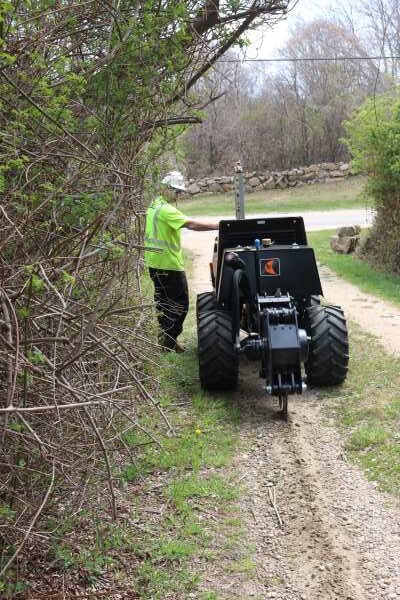
Sertex deployment crews use specialized equipment to ensure minimal disruption throughout the construction process.
#5: Working Through Delays by Scheduling Alternative Tasks
Many project delays are outside the control of the network builder, but there’s almost always something to do to move the project forward.
- In seasonal tourist communities, population and traffic can vary dramatically between off and high-season. On Block Island, aerial construction slowed to a virtual halt in summer months when population explodes from about 1,000 year-round residents to more than 20,000. Sertex kept construction moving by focusing summer work on private properties and side roads, and scheduling mainline construction during the off-season.
- While local utilities move slowly on make ready, efficient deployment experts redirect crews to work underground, installing conduit and fiber drops. Once poles are licensed, crews are moved on to aerial cable installation.

The seasonal influx of tourists did not slow BroadbandBI construction as crews kept working in non-commercial areas.
#6: Communications in Remote Areas
Critical to successful deployments, communication is sometimes elusive and must be MacGyvered.
- In the mountains, cellular dead zones can prevent real-time communication. Sertex worked with the FCC to secure long-range communication antennas mounted on trucks and equipment. The radio network allowed seamless collaboration between utility crews and other construction teams.
- Throughout the BroadbandBI build, most of the Island was either grossly underserved or unserved. Sertex set up its project trailer outside town offices to access the island’s only working fiber connection. For reporting, communication and entertainment, deployed crews used hotspots – which were only as good as the area cell signal.
- Weekly project meetings kept Block Island officials informed about progress. Anxious residents received regular construction updates shared on the project website, social media, and in the local newspaper.
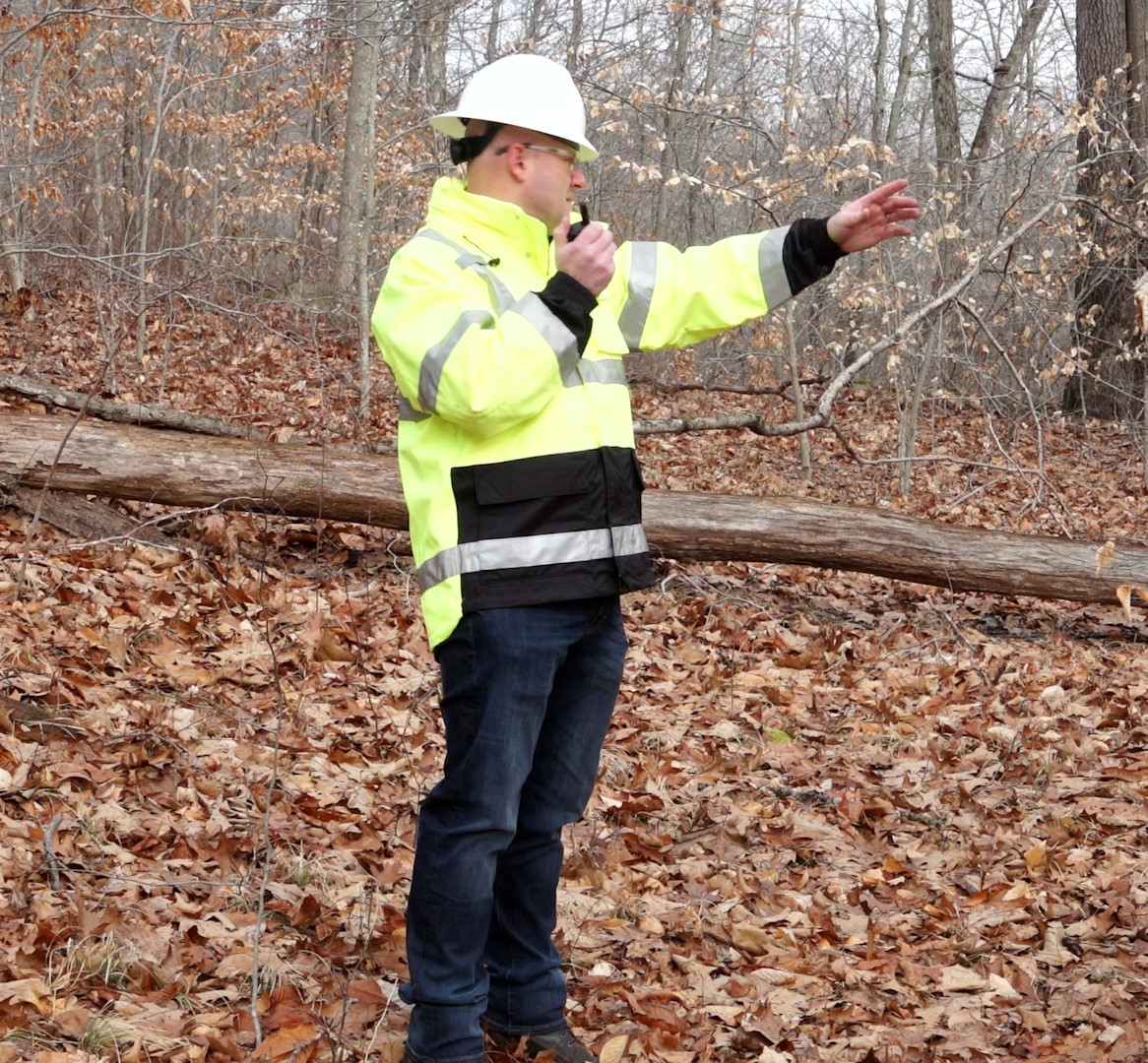
Real-time communication is essential to keep projects moving forward safely, on schedule, and on budget.
#7: Housing Crews Far from Home and Maintaining Morale on the Road
Crews in remote locations live where they work for days and weeks. Deployment teams are challenged to secure housing, recruit and retain employees willing to sacrifice their personal time, and incentivize model behavior.
- Housing in deployment areas is costly. Over the years-long western Massachusetts buildout Massachusetts “Last Mile” Towns Celebrate a Major Fiber Broadband Milestone, Sertex crews stayed primarily in hotels. Limited and expensive, rental housing on Block Island was secured six months in advance although the nature or amount of upcoming work was unknown. Off-season rental expenses of thousands of dollars a month inflated to thousands a week during peak season.
- To maintain morale and respect workers’ personal time, four-day work weeks were scheduled as possible, providing crews long weekends off.
- Food resources are limited in remote areas. In the mountains, Sertex installed microwaves in trucks or crews brought small camp grills for cooking and coffee. Block Island crews ordered online grocery delivery. If the ferry didn’t run or an order was placed too late, they had to wait for food supplies.

Block Island deployment crews enjoyed a company-sponsored New England Clam Bake.
Providing fiber internet in dense urban areas is easy. Rural and remote buildouts require flexibility, creativity, dedication, and some luck to conquer challenges and boost motivation. By implementing these best practices while remaining adaptable to local conditions and challenges, organizations can successfully deliver vital broadband infrastructure to deliver decades of reliable service at minimal costs to people most in need.


